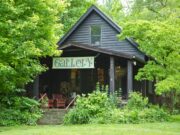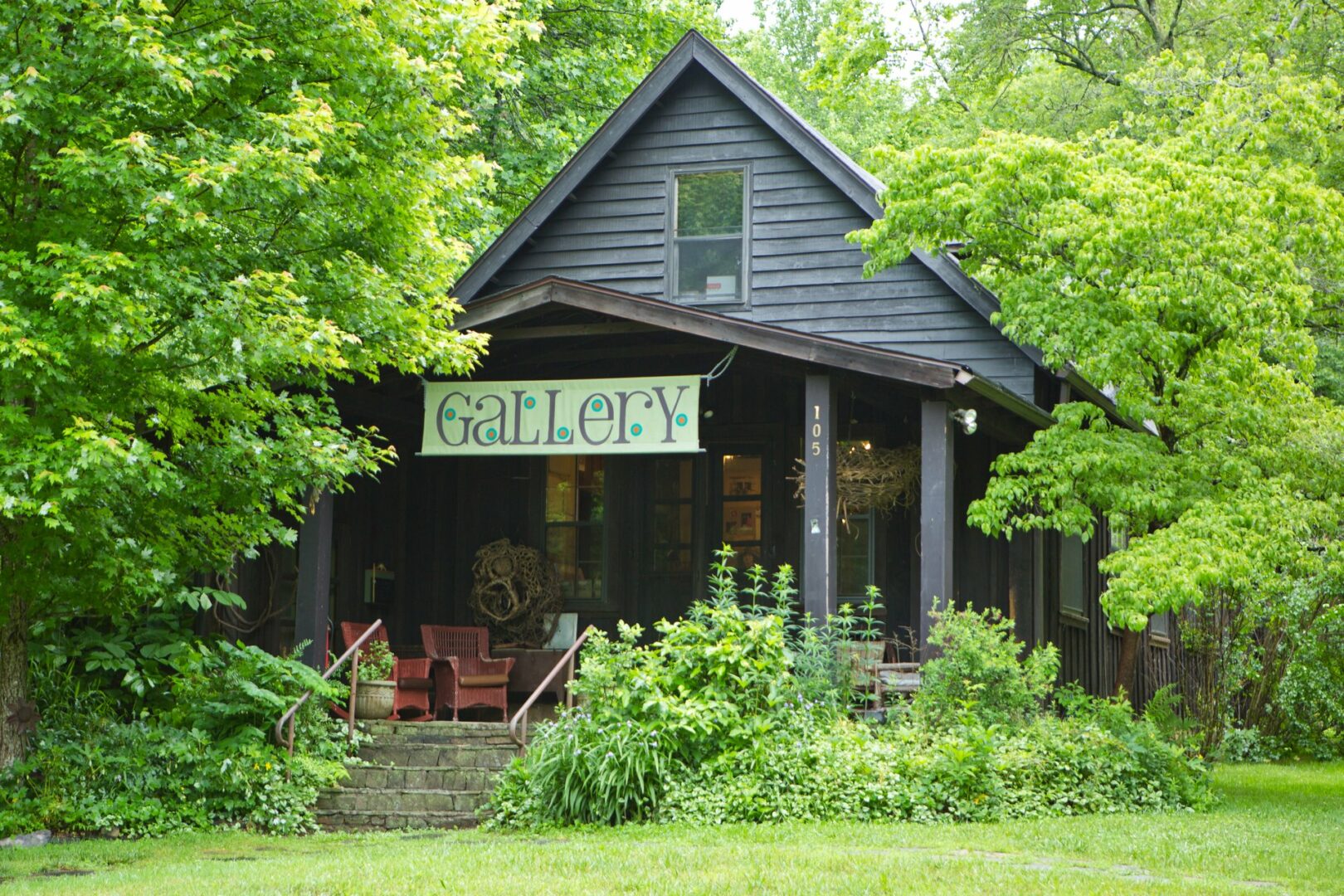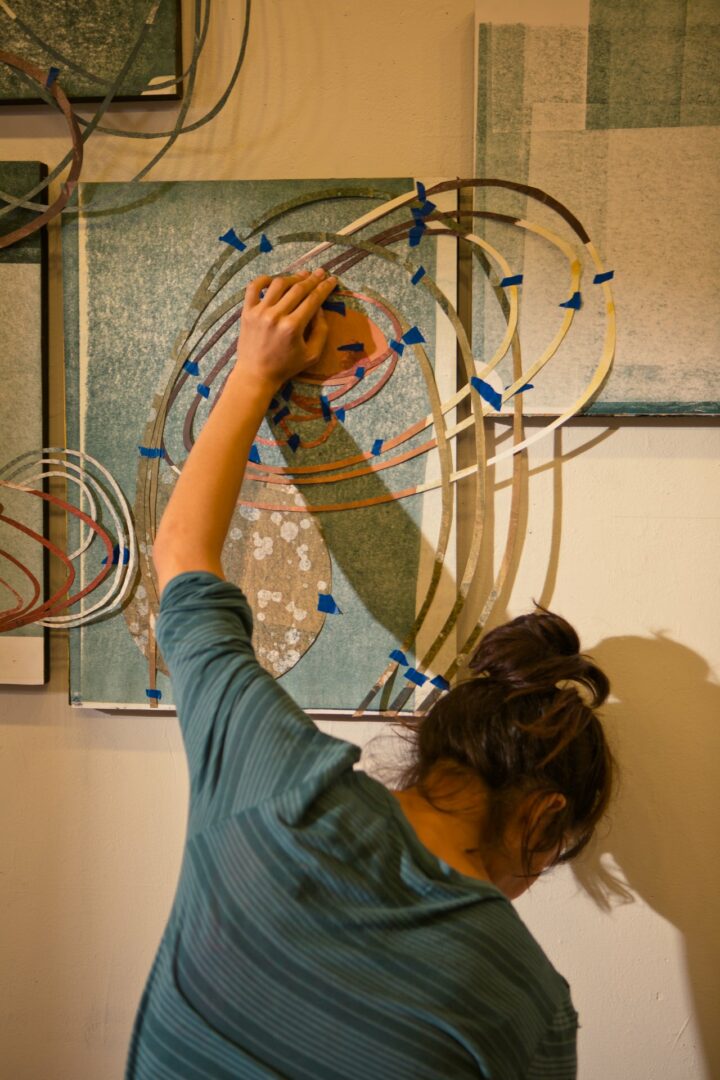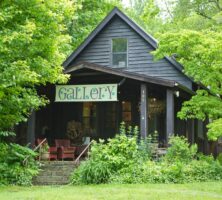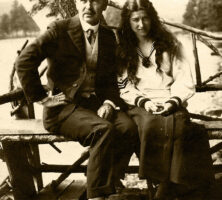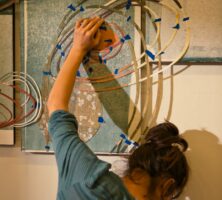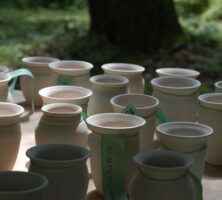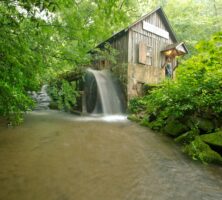The Hambidge Center for Creative Arts and Sciences, founded by artist Mary Crovatt Hambidge, is an artists’ community situated on 600 acres of pristine, natural forests, woodlands, and streams of the north Georgia mountains. Hundreds of visual artists, writers, potters, composers, dancers, and other artists have pursued their crafts here in solitude. The Hambidge Center, along Betty’s Creek in Rabun County, was the site of a revival of the mountain art of weaving from the 1930s to the 1950s, and it continues today as a focus for community activities geared toward the arts and nature.
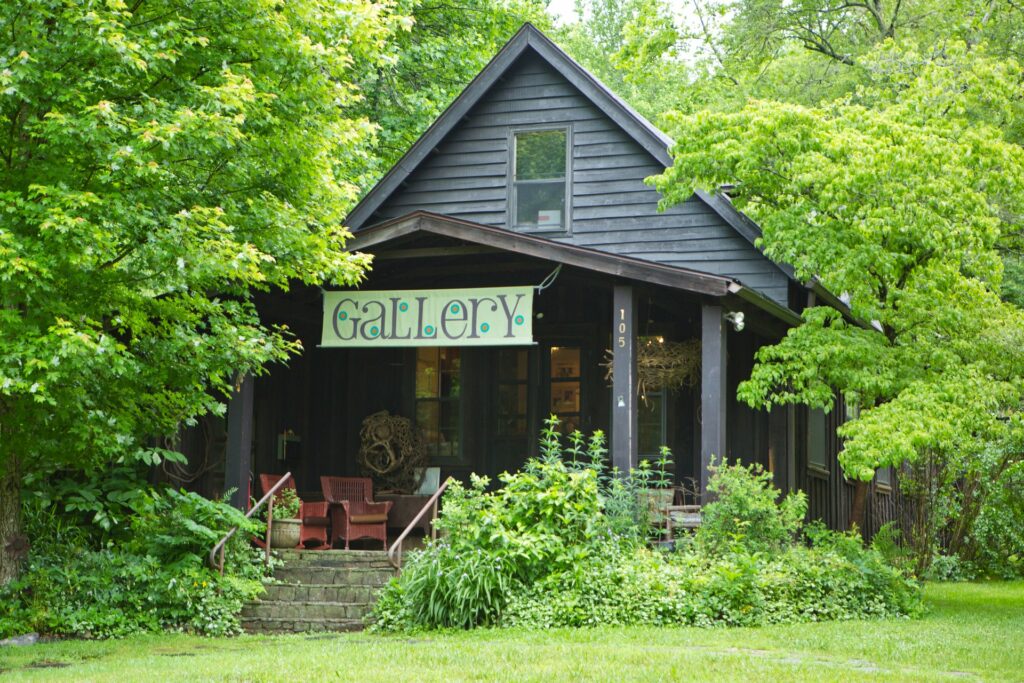
Courtesy of Explore Georgia.
Mary Crovatt Hambidge was born in Brunswick in 1885, the daughter of Judge Alfred Crovatt. She was educated in the classics at a finishing school in Cambridge, Massachusetts, and moved to New York in her early twenties. She had acting aspirations and was a professional whistler on Broadway at a time when artists of all kinds were featured on the stage. In New York, she met Canadian-born Jay Hambidge, an artist, illustrator, and scholar who pioneered the concept of “dynamic symmetry,” the linking of nature’s symmetry with that of human art objects. Though they never married, the two spent the next decade together.
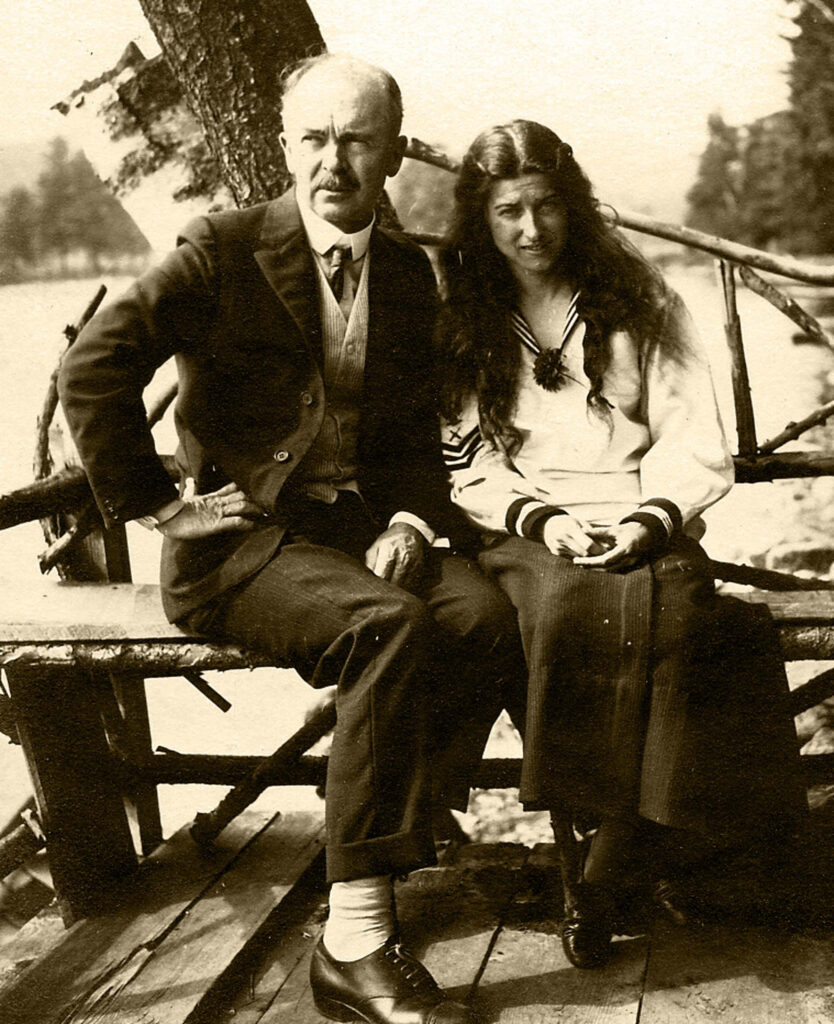
Courtesy of Hambidge Center for Creative Arts and Sciences
The couple traveled to Greece, where she became intrigued with the village weavers who sheared sheep, spun wool thread, and wove wool garments on a daily basis. She became imbued with the idea of learning to weave, and the craft became her passion. After Jay Hambidge’s sudden death in 1924, she went to Rabun County to weave in a friend’s summer home. She wrote that she made contact with women in the mountains whose “looms had been relegated to the attics or the woodpile” but who still “kept their craft knowledge and their native integrity.”
Through her benefactor, Eleanor Steele Reese, Mary Hambidge was able to buy nearly 800 acres surrounding a proposed hunting lodge. In 1934 the Jay Hambidge Art Foundation was formally created; it was incorporated ten years later as a nonprofit organization for educational and scientific purposes. Hambidge fostered a group of women, known as the Weavers of Rabun, who grew and sheared sheep, carded and spun wool thread, and created fine woven goods. Hambidge lived in an old dogtrot-style cabin, and the Rock House, a fieldstone-base lodge, served as the weaving house until the Weave Shed, now used as the Hambidge Gallery, was built for the women.
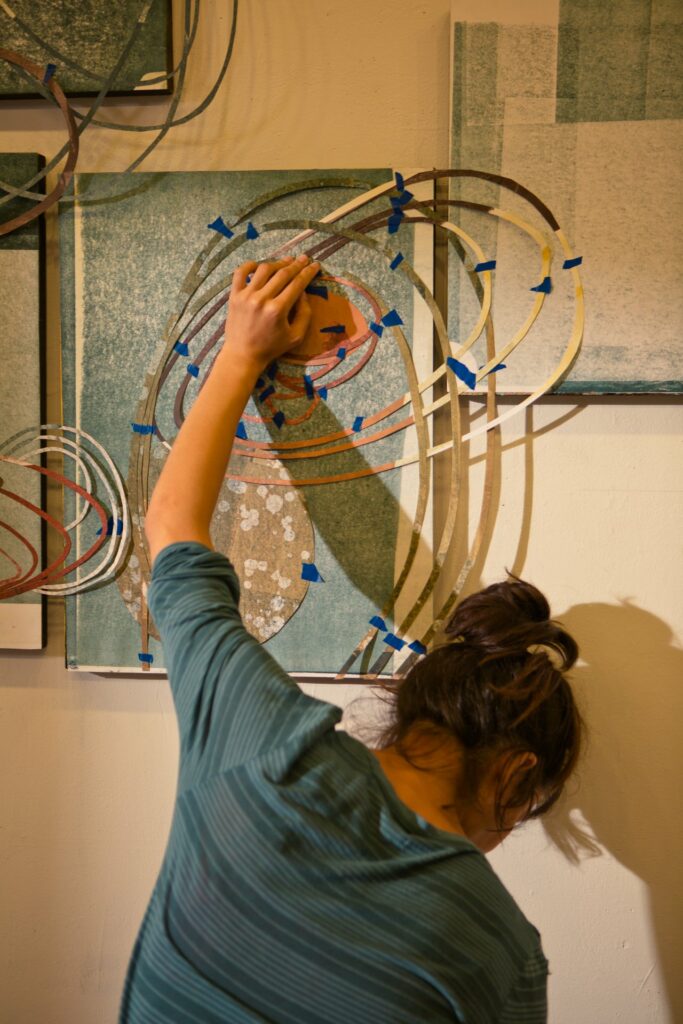
Courtesy of Explore Georgia.
“’The Weavers of Rabun’ gained international recognition for the quality and beauty of their fabrics, and a Madison Avenue shop in New York was established as an outlet,” where wealthy buyers could purchase these handwoven fabrics, the former center director Mary Nikas Beery wrote in an unpublished history of the center, “The Hambidge Center in the Betty’s Creek Community.” They were commissioned to outfit U.S. president Harry S. Truman’s yacht with their woven fabrics; in 1958 the Smithsonian Institution in Washington, D.C., mounted an exhibition of their work. Under Hambidge’s leadership “these mountain weavers contributed significantly to the renaissance of handcrafts in America,” Beery wrote.
With the industrialization of the 1950s and the availability of steady mill jobs, the weavers slowly disbanded. Hambidge broadened the scope of the center and invited creative artists and friends to come for extended stays there. An original caretaker’s house became an artist’s home, a studio was added, and other cabins gradually were built, all in secluded spots that allowed for maximum privacy along the mountainsides that line the Betty’s Creek valley.

Courtesy of Hambidge Center for Creative Arts and Sciences
Among the visitors was Eliot Wigginton’s father, a landscape architect at the University of Georgia, who often brought his son along with him. Those childhood visits to the Hambidge Center led Wigginton to return to the area as a teacher in 1966. Discussions with other Hambidge guests inspired him to develop the Foxfire program, in which students explored their local and regional heritage for the magazine that they created under Wigginton’s guidance.
Before her death on August 29, 1973, Mary Hambidge provided for the board of trustees to take over the center, thus ensuring the continuation of her mission. Through three subsequent artist-directors, the center developed as a community resource for nature and art programs and formally began a residency program, which now has an international reputation. Every year, applicants from all parts of the United States and from around the world are selected to spend two weeks to two months in residency. Over the years, a great deal of assistance has been provided to the center by numerous funding sources, including the Fulton County Arts Council and the Georgia Council for the Arts, private foundations, and memberships from the community. Expanding creative vision is the center’s mission; artists taking part in the program return to their communities to share their art and renewed inspiration.
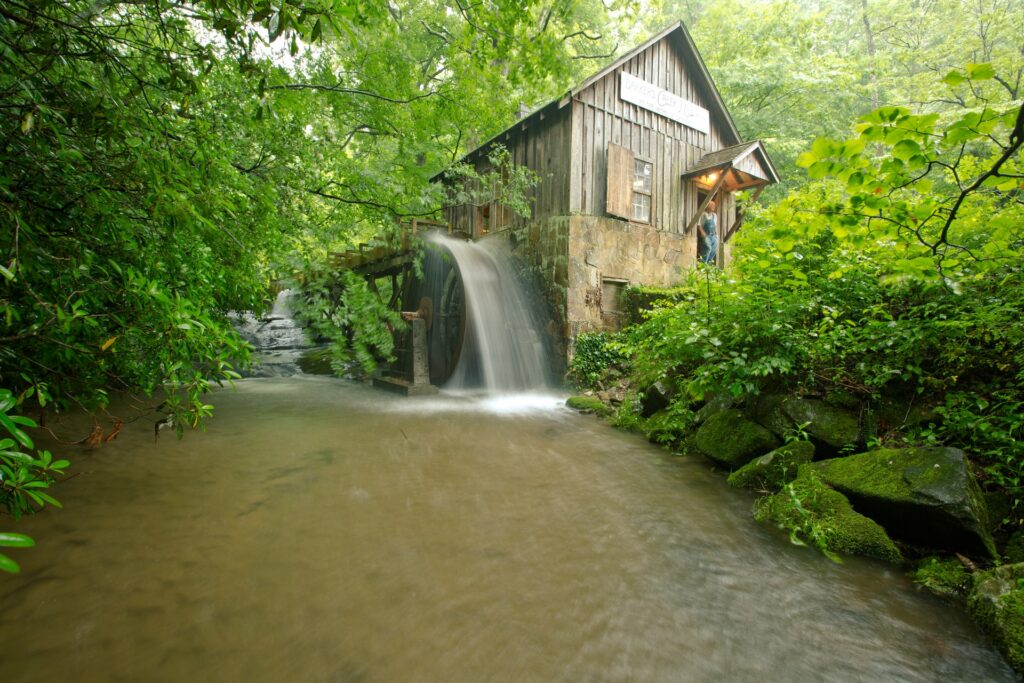
Courtesy of Explore Georgia.


